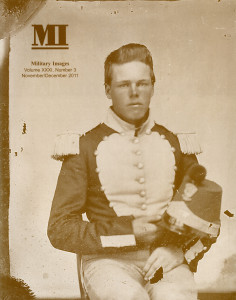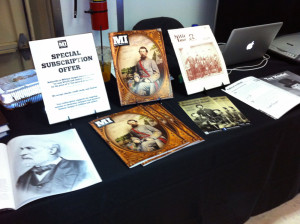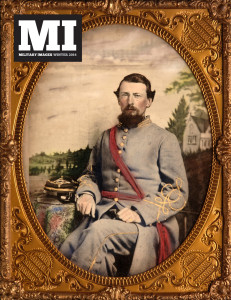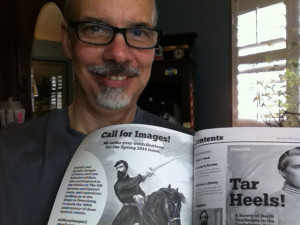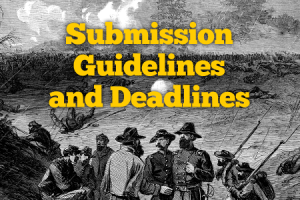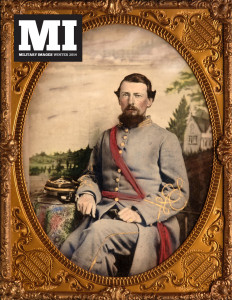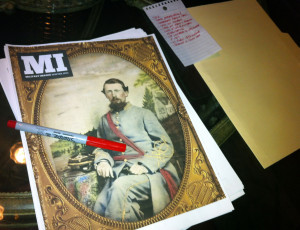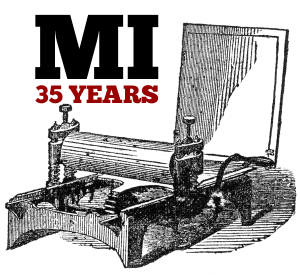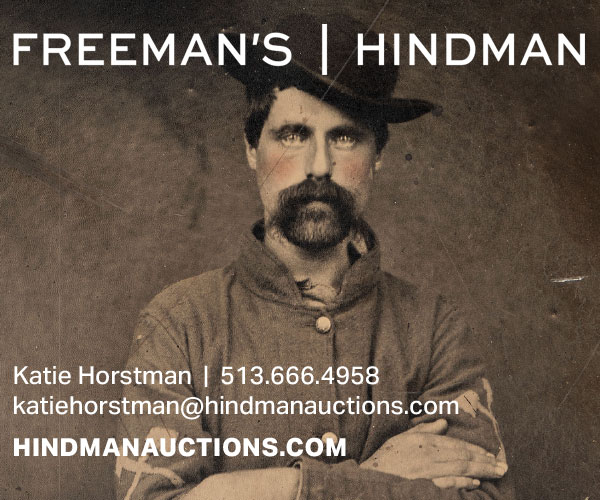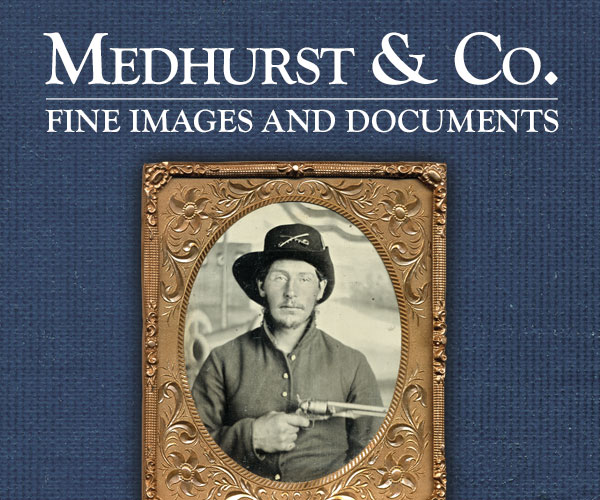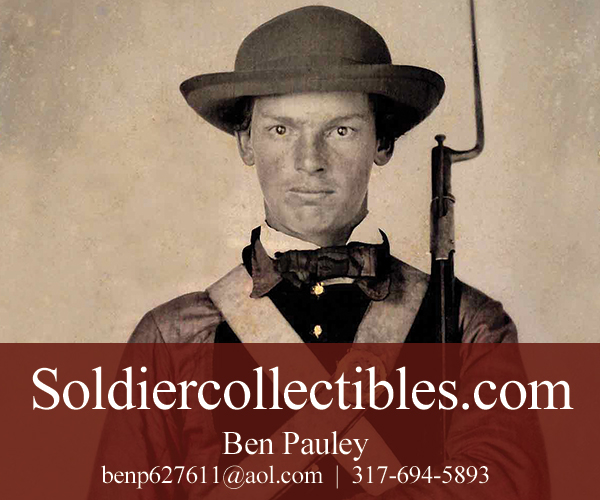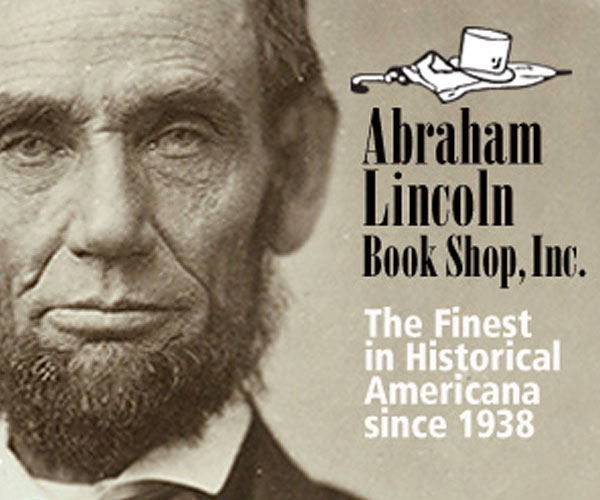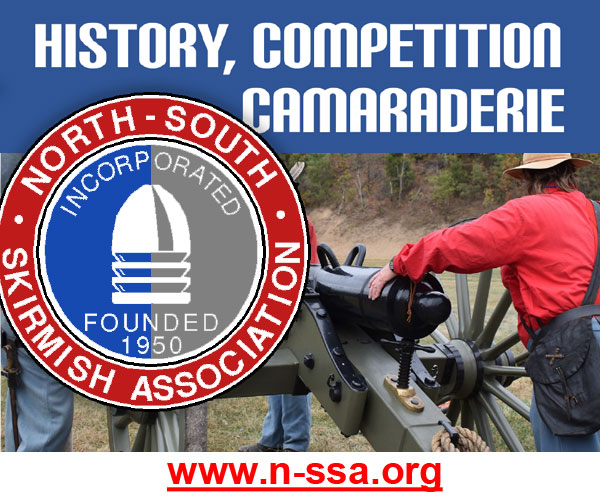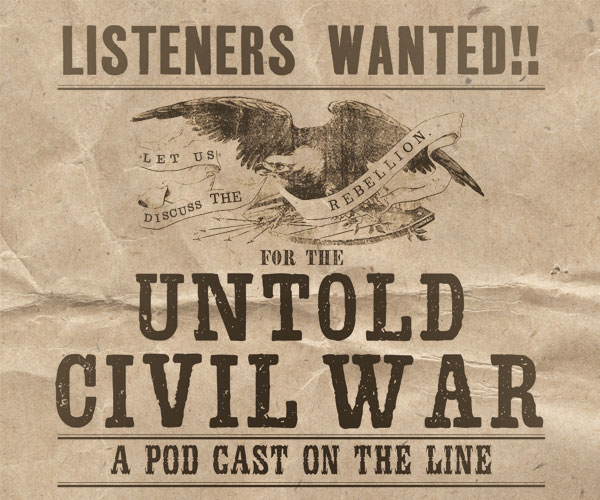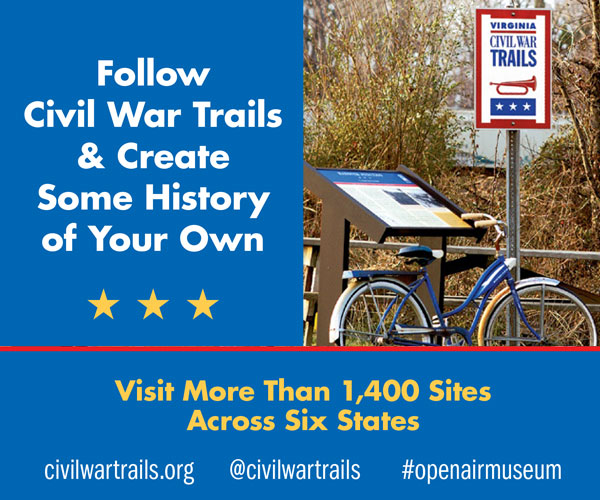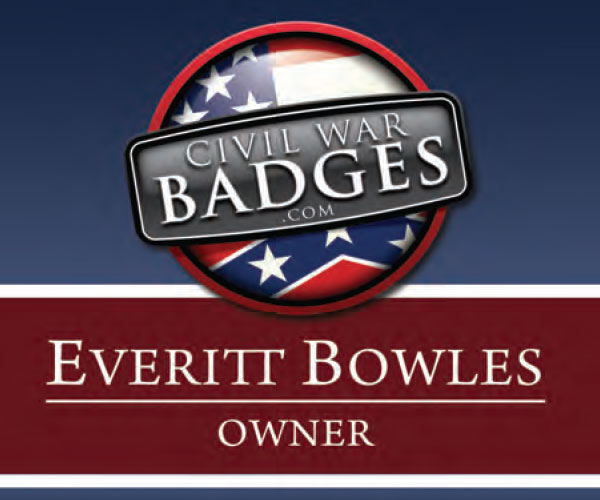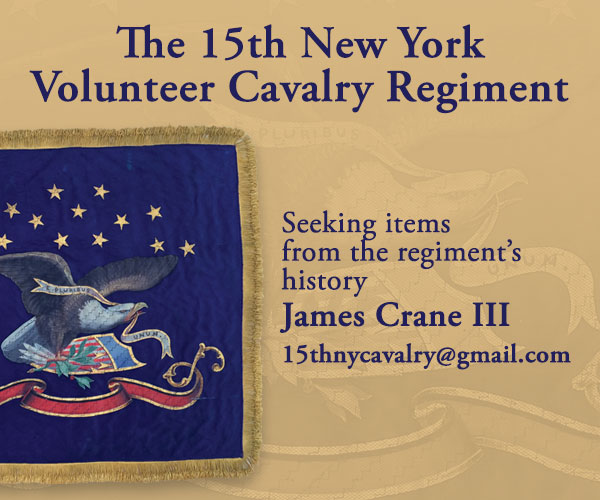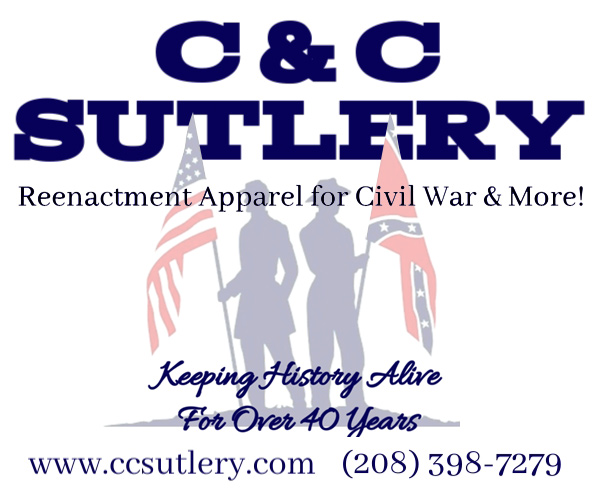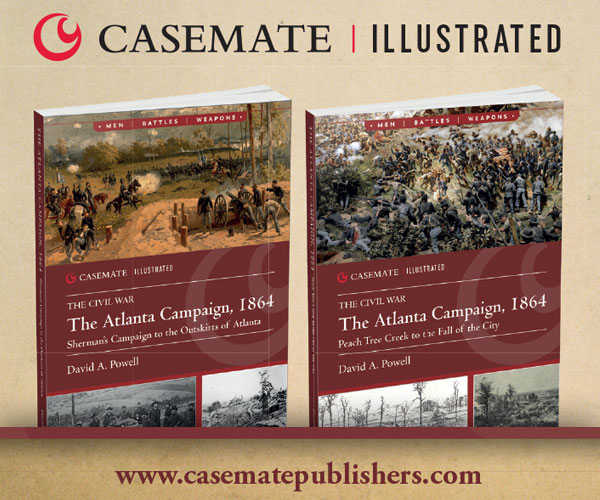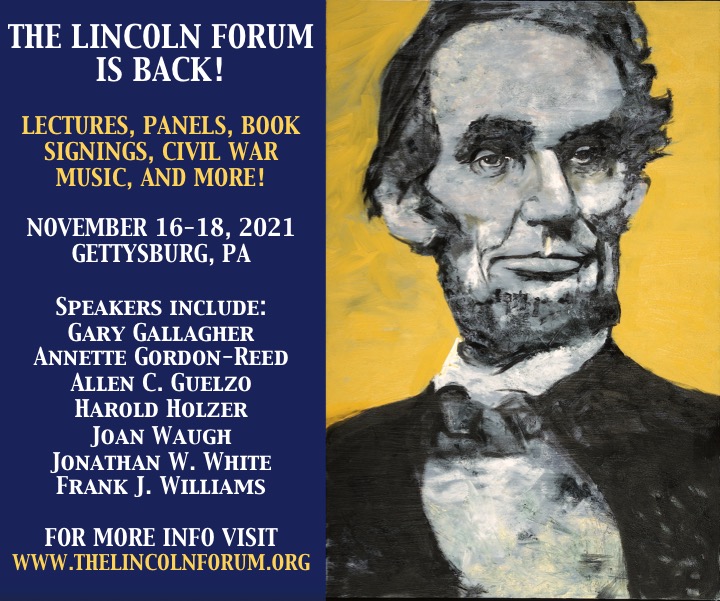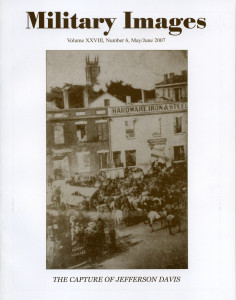
The complete issue
Vol. XXVIII, No. 6
(40 pages)
Print edition: Visit our store to check availability
Digital edition: Visit JSTOR.org to purchase
Subscribe to MI
Explore the MI Archives: Browse | Advanced search | Tutorial
Inside
Cover image
A carte de visite from the David Parks collection is inscribed, “Ambulance and wagon occupied by Mr. Davis and family in front of Gen. Wilson’s Headquarters Macon, GA, May 12, 1865.”
Table of Contents (p. 1)
Editor’s Desk and Mail Call (p. 2)
The editor explains why readers received a second copy of this issue. Turns out the first issue had printing irregularities that prompted a reprint and resend. He goes on to promote the upcoming medical issue, and describes the interest as “red hot.”
Passing in Review (p. 3)
The Officer Corps of Custer’s Seventh Cavalry 1866-1876 (Schiffer Military History) by James B. Klokner is well received. “Mr. Klokner’s volume contributes useful biographical data to our already vast knowledge of the 7th U.S. Cavalry.”
The Capture of Jefferson Davis by John Sickles (pp. 4-19)
The author tells the dramatic story of how the Confederate president fell into enemy hands, and it is illustrated with a number of identified portraits of troopers who served in the 4th Michigan Cavalry, the regiment credited with the capture. They include Benjamin Archer, Herbert A. Backus, William L. Bailey, Lester P. Bates, Lucius Bates, Charles Blackall, Henry S. Boutell, Martin L. Brown, Joseph Colenso, Julian G. Dickinson, William Dill, John H. Douglas, John N. Gilbert, Augustus Grawn, George Hall, Martin V. Heckathorn, George F. Hodge, Charles T. Hudson, Joseph W. Huston, George Kauffman, Gurdin N. Kenyon, George W. Lawton, William McCune, Angus McDonald, John C. McLain, Emery A. Miller, Robert Horatio George Minty, Frank Mix, Elias F. Pierce, Henry A. Potter, Benjamin D. Pritchard, Alfred B. Purinton, Elias Scales, Isaac Skinner, George Smith, Luke M. Thayer, Benjamin Thompson, George B. Walker, Horace B. Warner, Augustus Wegal, Charles Wegal, Daniel P. Welton (possibly) and Fred Woohans.
Conant Family in the Civil War by J. Dale West (pp. 20-23)
The story is subtitled, “From Missouri, the Conant brothers were early volunteers in ‘Mr. Lincoln’s Army.’” The author profiles Maj. Horace A. Conant, aide de camp to Brig. Gen. Nathaniel Lyon and paymaster, 1st and 2nd Regiments, 1st Brigade Missouri Volunteers and Capt. John H. Conant, 1st Missouri Light Artillery. Also pictures are Capt. and Provost Marshal Abraham D. Daugherty and Abbie Maria Conant Daugherty, wife of Capt. Abraham Daugherty and sister of Horace and John.
Texans in Search of a Fight by Derek Manov (pp. 24-27)
Two photographs of Confederate soldiers are the subject of this investigation into the uniforms and equipment of the 4th Texas Infantry, which was part of Gen. John B. Hood’s Texas Brigade in the Army of Northern Virginia. One image, a quarter-plate ambrotype, pictures two unidentified members of Company B, also known as the ‘Tom Green Rifles.” The second image, a sixth-plate ambrotype, is a portrait of an unidentified member of the regiment.
Rhode Island Uniforms in the Civil War by Robert Grandchamp (pp. 28-32)
Though comparatively smaller in size and population to the other states of the Union, Rhode Island had its share of uniform style. The author details the variations, illustrated with several images that include privates William S. Perrin and William H. Jordan of the 1st Light Artillery, Capt. Theodore Winn, Pvt. Horace D. Healey, Pvt. Henry Wilson, Pvt. John P. Jones, Sgt. Franklin Gonsolve and Lt. Darius Cole of the 7th Infantry, Capt. George Newman Bliss of the 1st Cavalry, Pvt. George Henry Maxfield of the 2nd Infantry.
Uniforms & History by Michael J. McAfee (pp. 33-34)
In “The Ninety-Seventh Regiment, New York Volunteer Infantry,” McAfee examines the service record of the regiment, which lost heavily during the first day of the Battle of Gettysburg, and the uniforms and equipment that they were issued. Images that accompany the text include Luther E. Bullock, Louis Dallarmi, George F. Dempster and William A Wright.
The Confederate Soldier (p. 35)
A hard-plate photograph of A.J. Johnson of the 18th Alabama Infantry in civilian clothes may be the only surviving portrait of the soldier, who died during the April 1865 siege on Spanish Fort in Mobile Bay, Ala.
Stragglers (pp. 36-38)
A total of 11 images are featured in this issue. None of the soldiers are identified.
Sutler’s Row (p. 39)
The Last Shot (p. 40)
A carte de visite copy of a tintype of two soldiers with smokes and cards from the collection of Chris Nelson is simply titled, “Pards At Cards.”
Back Cover
A carte de visite from the David W. Vaughan collection pictures Benjamin Staats of the 14th Rhode Island Heavy Artillery.
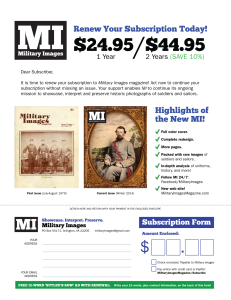 The redesign that debuted with the current issue of the magazine has impacted all other materials associated with the publication. This includes the renewal form, which is being mailed today to those who have expired subscriptions.
The redesign that debuted with the current issue of the magazine has impacted all other materials associated with the publication. This includes the renewal form, which is being mailed today to those who have expired subscriptions.